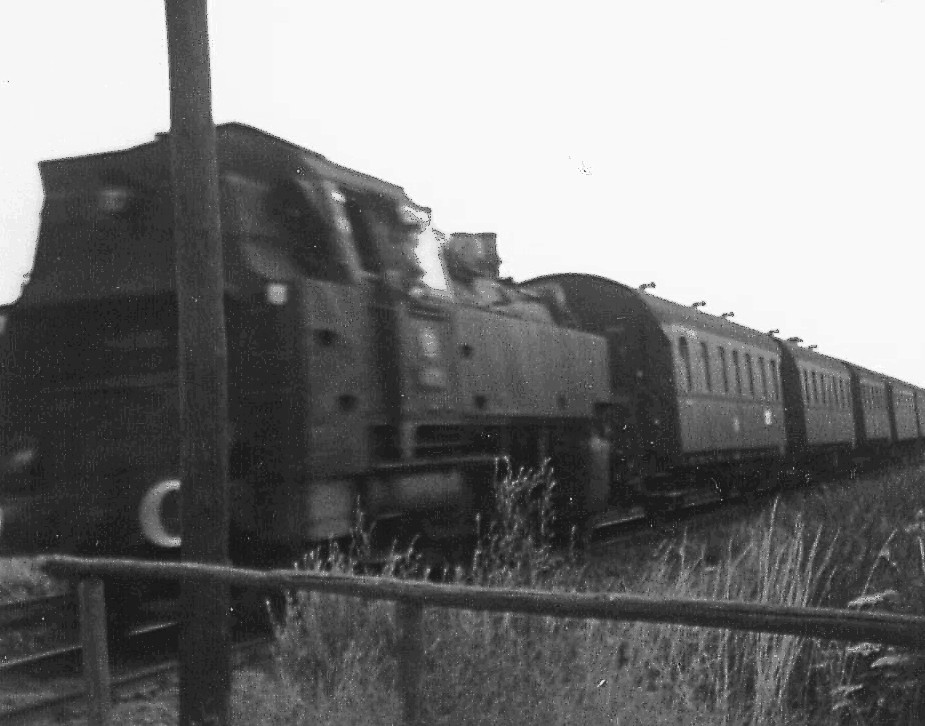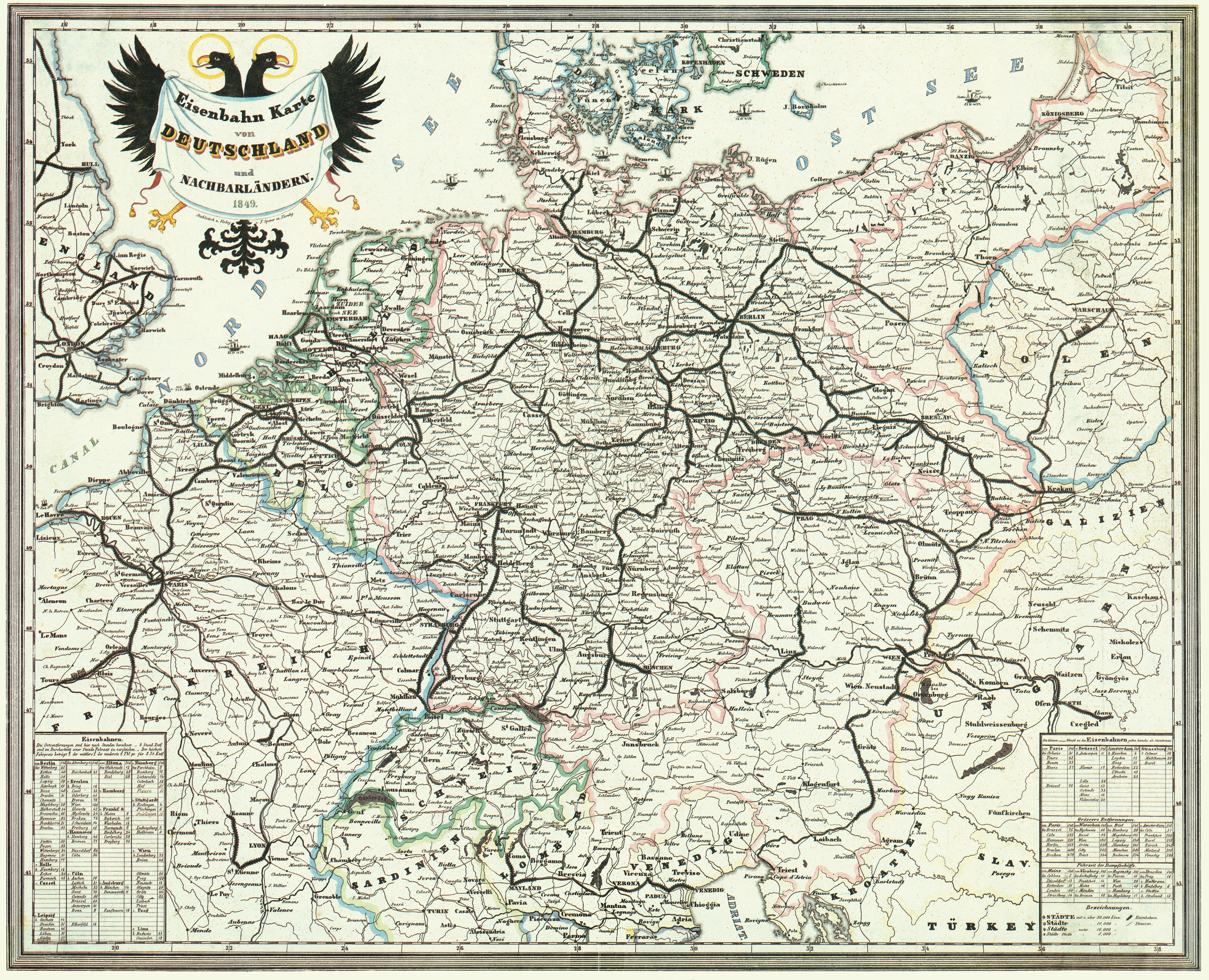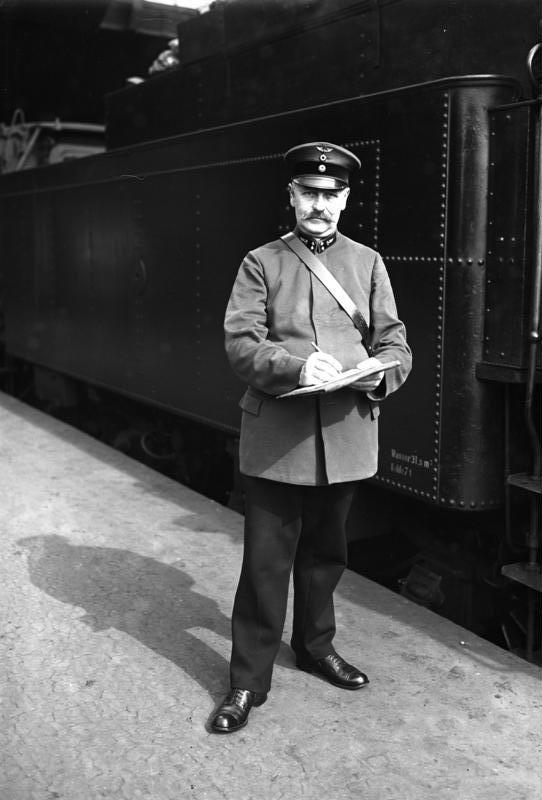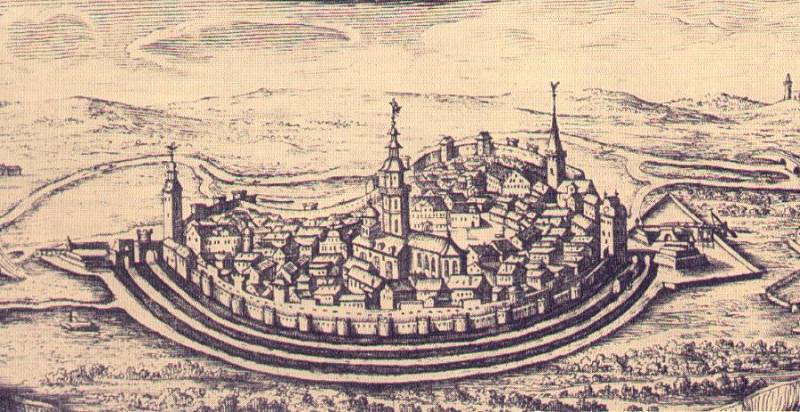|
Coburg–Sonneberg Railway
The Coburg–Sonneberg railway is a single-track, electrified, 20 kilometre-long main line railway from Coburg in the German state of Bavaria via Neustadt to Sonneberg in Thuringia. It was opened in 1858 and is one of the oldest railways in Germany. History In 1841 the Grand Duchy of Saxe-Weimar-Eisenach and the duchies of Saxe-Coburg and Gotha and Saxe-Meiningen signed a treaty to establish a railway from Eisenach to Coburg. This also covered the construction of a line from Coburg to Sonneberg, connecting Sonneberg with the city of Meiningen and south to Bavaria. in 1855 the newly formed ''Werra Railway Company'' (''Werra-Eisenbahn-Gesellschaft'') received a concession to build and operate the line and on 1 November 1858 the Werra Railway was opened. 28 years later, on 1 October 1886, a 19.2 km long extension was opened from Sonneberg to Lauscha. On 1 October 1895, the Werra-Railway Company, including this line, was acquired by the Prussian government and it was administere ... [...More Info...] [...Related Items...] OR: [Wikipedia] [Google] [Baidu] |
15 KV AC Railway Electrification
Railway electrification systems using at are used on transport railways in Germany, Austria, Switzerland, Sweden, and Norway. The high voltage enables high power transmission with the lower frequency reducing the losses of the traction motors that were available at the beginning of the 20th century. Railway electrification in late 20th century tends to use AC systems which has become the preferred standard for new railway electrifications but extensions of the existing networks are not completely unlikely. In particular, the Gotthard Base Tunnel (opened on 1 June 2016) still uses 15 kV, 16.7 Hz electrification. Due to high conversion costs, it is unlikely that existing systems will be converted to despite the fact that this would reduce the weight of the on-board step-down transformers to one third that of the present devices. History The first electrified railways used series-wound DC motors, first at 600 V and then 1,500 V. Areas with 3 k ... [...More Info...] [...Related Items...] OR: [Wikipedia] [Google] [Baidu] |
List Of The First German Railways To 1870
List of the first German railways to 1870 with German railways ordered by date of the commissioning the first phase of construction. For context see History of rail transport in Germany. Maps References * * {{DEFAULTSORT:Germany railways History of rail transport in Germany Lists of firsts ... [...More Info...] [...Related Items...] OR: [Wikipedia] [Google] [Baidu] |
Berlin Blockade
The Berlin Blockade (24 June 1948 – 12 May 1949) was one of the first major international crises of the Cold War. During the multinational occupation of post–World War II Germany, the Soviet Union blocked the Western Allies' railway, road, and canal access to the sectors of Berlin under Western control. The Soviets offered to drop the blockade if the Western Allies withdrew the newly introduced Deutsche Mark from West Berlin. The Western Allies organised the Berlin Airlift (german: Berliner Luftbrücke, lit="Berlin Air Bridge") from 26 June 1948 to 30 September 1949 to carry supplies to the people of West Berlin, a difficult feat given the size of the city and the population. American and British air forces flew over Berlin more than 250,000 times, dropping necessities such as fuel and food, with the original plan being to lift 3,475 tons of supplies daily. By the spring of 1949, that number was often met twofold, with the peak daily delivery totalling 12,941 tons. Am ... [...More Info...] [...Related Items...] OR: [Wikipedia] [Google] [Baidu] |
Inner German Border
The inner German border (german: Innerdeutsche Grenze or ; initially also ) was the border between the German Democratic Republic (GDR, East Germany) and the West Germany, Federal Republic of Germany (FRG, West Germany) from 1949 to 1990. Not including the similar and physically separate Berlin Wall, the border was long and ran from the Baltic Sea to Czechoslovakian border fortifications during the Cold War, Czechoslovakia. It was established on 1July 1945 (formally by Potsdam Agreement) as the boundary between the Allied-occupied Germany, Western and Soviet occupation zones of former Nazi Germany. On the eastern side, it was made one of the world's most heavily fortified frontiers, defined by a continuous line of high metal border barrier, fences and walls, barbed wire, alarms, anti-vehicle ditches, watchtowers, automatic booby traps, and minefields. It was patrolled by fifty thousand armed East German guards who faced tens of thousands of West German, British, and U.S. guard ... [...More Info...] [...Related Items...] OR: [Wikipedia] [Google] [Baidu] |
Red Army
The Workers' and Peasants' Red Army (Russian language, Russian: Рабо́че-крестья́нская Кра́сная армия),) often shortened to the Red Army, was the army and air force of the Russian Soviet Federative Socialist Republic and, after 1922, the Union of Soviet Socialist Republics. The army was established in January 1918. The Bolsheviks raised an army to oppose the military confederations (especially the various groups collectively known as the White Army) of their adversaries during the Russian Civil War. Starting in February 1946, the Red Army, along with the Soviet Navy, embodied the main component of the Soviet Armed Forces; taking the official name of "Soviet Army", until its dissolution in 1991. The Red Army provided the largest land warfare, land force in the Allied victory in the European theatre of World War II, and its Soviet invasion of Manchuria, invasion of Manchuria assisted the unconditional surrender of Empire of Japan, Imperial Japan. ... [...More Info...] [...Related Items...] OR: [Wikipedia] [Google] [Baidu] |
Erfurt
Erfurt () is the capital and largest city in the Central German state of Thuringia. It is located in the wide valley of the Gera river (progression: ), in the southern part of the Thuringian Basin, north of the Thuringian Forest. It sits in the middle of an almost straight line of cities consisting of the six largest Thuringian cities forming the central metropolitan corridor of the state, the "Thuringian City Chain" ('' Thüringer Städtekette'') with more than 500,000 inhabitants, stretching from Eisenach in the west, via Gotha, Erfurt, Weimar and Jena, to Gera in the east. Erfurt and the city of Göttingen in southern Lower Saxony are the two cities with more than 100,000 inhabitants closest to the geographic center of Germany. Erfurt is located south-west of Leipzig, north-east of Frankfurt, south-west of Berlin and north of Munich. Erfurt's old town is one of the best preserved medieval city centres in Germany. Tourist attractions include the Merchants' Bridge ... [...More Info...] [...Related Items...] OR: [Wikipedia] [Google] [Baidu] |
Deutsche Reichsbahn
The ''Deutsche Reichsbahn'', also known as the German National Railway, the German State Railway, German Reich Railway, and the German Imperial Railway, was the German national railway system created after the end of World War I from the regional railways of the individual states of the German Empire. The ''Deutsche Reichsbahn'' has been described as "the largest enterprise in the capitalist world in the years between 1920 and 1932"; nevertheless its importance "arises primarily from the fact that the Reichsbahn was at the center of events in a period of great turmoil in German history". Overview The company was founded on 1 April 1920 as the ("German Imperial Railways") when the Weimar Republic, which still used the nation-state term of the previous monarchy, (German Reich, hence the usage of the in the name of the railway; the monarchical term was ), took national control of the German railways, which had previously been run by the German states. In 1924 it was reorgan ... [...More Info...] [...Related Items...] OR: [Wikipedia] [Google] [Baidu] |
Railway Divisions In Germany
In Germany and Austria, the running of railway services for a railway administration or the regional network of a large railway company was devolved to railway divisions, variously known as ''Eisenbahndirektionen (ED), Bundesbahndirektionen (BD)'' or ''Reichsbahndirektionen (RBD/Rbd)''. Their organisation was determined by the railway company concerned or by the state railway and, in the German-speaking lands at least, they formed the intermediate authorities and regional management organisations within the state railway administration's hierarchy. On the formation of the Deutsche Bahn AG in 1994 the system of railway divisions (''Eisenbahndirektionen'') in Germany was discontinued and their tasks were transferred to new "business areas". Germany State railway divisions Incorporation into the state government The first railway divisions of the various German state railways (known as '' Länderbahnen''), usually reported to a specific government ministry. For example, in Prus ... [...More Info...] [...Related Items...] OR: [Wikipedia] [Google] [Baidu] |
Prussia
Prussia, , Old Prussian: ''Prūsa'' or ''Prūsija'' was a German state on the southeast coast of the Baltic Sea. It formed the German Empire under Prussian rule when it united the German states in 1871. It was ''de facto'' dissolved by an emergency decree transferring powers of the Prussian government to German Chancellor Franz von Papen in 1932 and ''de jure'' by an Allied decree in 1947. For centuries, the House of Hohenzollern ruled Prussia, expanding its size with the Prussian Army. Prussia, with its capital at Königsberg and then, when it became the Kingdom of Prussia in 1701, Berlin, decisively shaped the history of Germany. In 1871, Prussian Minister-President Otto von Bismarck united most German principalities into the German Empire under his leadership, although this was considered to be a " Lesser Germany" because Austria and Switzerland were not included. In November 1918, the monarchies were abolished and the nobility lost its political power durin ... [...More Info...] [...Related Items...] OR: [Wikipedia] [Google] [Baidu] |
Lauscha
Lauscha is a town in the district of Sonneberg, in Thuringia, Germany. It is situated 13 km north of Sonneberg, and 24 km southwest of Saalfeld. Lauscha is known for its glassblowing, especially for Christmas tree decorations like baubles. Geography Lauscha is located in the mountain range of the Thüringer Schiefergebirge. The town is nestled into the steep valley of a tributary of the river Steinach just below the ridge of the mountain chain, the well-known Rennsteig. The main train station in Lauscha is 611 m above sealevel, the Pappenheimer Berg, the highest mountain within the town limits rises up to 834,5 m above sea level. Neighbouring towns Immediate neighbours are the following towns and villages: *Neuhaus am Rennweg *Lichte *Piesau * Oberland am Rennsteig * Steinach * Steinheid * Ernstthal am Rennsteig in the north east is part of Lauscha since 1994. Topography The town and valley of Lauscha get their name from the stream, which was first mentioned as ... [...More Info...] [...Related Items...] OR: [Wikipedia] [Google] [Baidu] |
Bahn Coburg-Neustadt 1958 , British archaeologist
Bahn may refer to: *Banie, formerly named Bahn, a Polish village *Deutsche Bahn, the national German railway company *Paul Bahn Paul G. Bahn, (born 29 July 1953)'Bahn, Paul (1953-)' ''Encyclopedia.com''. ... See also * Banie (other) {{Disambiguation ...[...More Info...] [...Related Items...] OR: [Wikipedia] [Google] [Baidu] |
Meiningen
Meiningen () is a town in the southern part of the state of Thuringia, Germany. It is located in the region of Franconia and has a population of around 25,000 (2021)." target="_blank" class="mw-redirect" title="City of Meiningen, citizen service">City of Meiningen, citizen service Jahresrückblick 2021 (year review), PDF (4,4 MB). Meiningen is the capital and the largest town of the district. From 1680 to 1920, Meiningen was the capital of the Duchy (and briefly of the Free State) of . Meiningen is consider ... [...More Info...] [...Related Items...] OR: [Wikipedia] [Google] [Baidu] |






